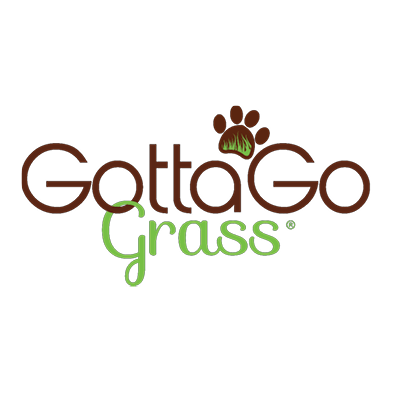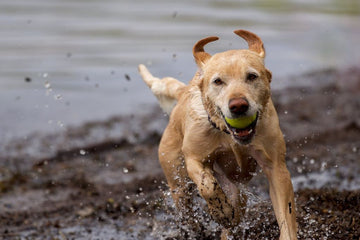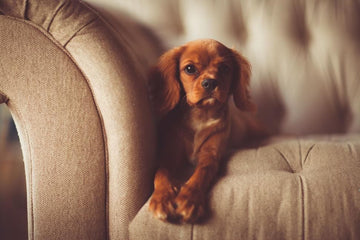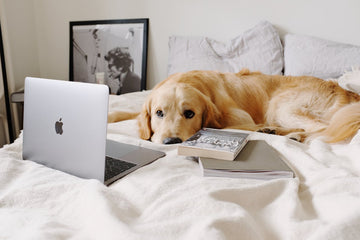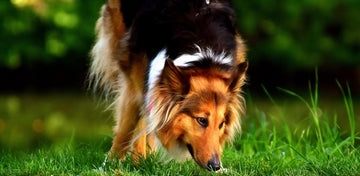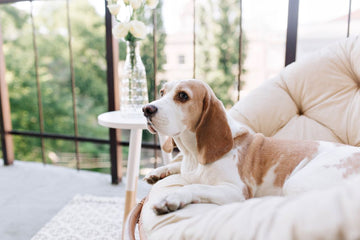
Spring is a time for sunshine, blooming flowers, and fresh starts, but it’s also prime allergy season. While we humans tend to sneeze our way through spring with tissues in hand, our dogs aren’t immune to the season’s allergens either. Pollen, dust, mold, and even their own dander can trigger allergic reactions that make your pup itchy, sneezy, and downright uncomfortable.
Luckily, one of the best ways to relieve these symptoms is to start right at home—with a thorough spring cleaning routine. Whether you reserve spring cleaning for well, spring, or prefer deep cleaning year-round, don’t forget about your pets. Not only do they contribute to the fur, grime, and paw prints around your house, but they also have their own things that need to be cleaned, refreshed, and updated. A clean home is a fresh start for both of you, and it can make a world of difference for your dog’s comfort and health.
Understanding Allergens That Affect Dogs Indoors
Much like us, dogs can suffer from seasonal allergies—and their symptoms often go unnoticed or are mistaken for other issues. Common signs include excessive paw licking, ear scratching, and irritated eyes.
As flowers bloom and trees release pollen into the air, those allergens don’t always stay outside. Dogs can track them in on their paws or fur or react simply from exposure to the changing environment. Aside from pollen, plenty of indoor allergens can trigger reactions, too.
Common Environmental Allergens that Affect Dogs Indoors
Dust and dust mites – These microscopic pests live in bedding, carpets, and furniture.
Pollen – Tracked in from walks or wafting through open windows.
Mold and mildew – Often hiding in damp or humid areas like bathrooms and basements.
Pet dander – Even their dander can trigger reactions in sensitive dogs.
Cleaning chemicals – Strong scents or harsh ingredients can irritate their skin and lungs.
Common Allergy Symptoms in Dogs
-
Excessive licking (especially of paws)
-
Red, itchy skin
-
Sneezing or coughing
-
Watery or red eyes
-
Chronic ear infections
-
Rubbing face on furniture or carpet

Spring Cleaning Tips to Reduce Allergens for Your Dog
Spring cleaning is more than just about a sparkling home—it’s also a chance to create a healthier space for your dog. By targeting the hidden dust, dander, and allergens that build up over time, you can help minimize allergy triggers and make your home more comfortable for your furry friend.
1. Start with a Deep Clean of Surfaces
The cornerstone of any spring cleaning plan is a good, deep clean. This means moving furniture, vacuuming underneath it, dusting every surface—including the baseboards—and removing the buildup that’s long been collecting. Focus especially on the areas your dog loves to hang out in—whether that’s their favorite sunny window seat, your bed, or the living room rug to reduce allergens.
-
Vacuum carpets and rugs using a HEPA filter vacuum to trap dander and dust mites.
-
Mop hard floors with pet-safe cleaners that will not irritate sensitive paws.
-
Dust surfaces, corners, and under furniture frequently, as dust builds up fast in hidden spots.
-
Clean baseboards, ceiling fans, and vents, which are sneaky dust collectors.
2. Wash Bedding—Yours and Your Dog’s!
Your pet’s bedding is basically a magnet for allergens—collecting fur, dander, dust, and even pollen brought in from walks. Regular washing keeps things fresh and clean, and helps reduce your dog’s exposure to irritants.
-
Wash dog beds, blankets, and plush toys weekly in hot water with a pet-safe detergent.
-
Pre-treat stains with enzymatic cleaners to remove bacteria and odors before tossing them in the wash.
-
Consider allergen-resistant covers for your dog’s bed to prevent future buildup.
-
Clean your own bedding regularly—especially if your dog sleeps on your bed.
-
Don’t forget their collars, harnesses, and leashes—these can also trap allergens.
-
If their bed is torn, frayed, or smells even after washing, it might be time to replace it with something cleaner and safer.
3. Clean Your Dog’s Stuff—Crates, Bowls, Hard Toys, etc.
Spring is the perfect time to give your dog’s gear a much-needed refresh. From crusty food bowls to slobbery toys, a little elbow grease can go a long way.
-
Wipe down crates and carriers with warm soapy water; disinfect with diluted bleach (½ cup per gallon of water), then rinse thoroughly.
-
Scrub hard toys using warm water and vinegar (1:1 ratio), rinse well, and let dry completely.
-
Wash food and water dishes at least weekly with hot water and dish soap; toss and replace if they’re scratched or worn.
-
Deep clean rubber mats, feeding stations, and treat dispensers, especially if they’re kept on the floor.
4. Groom Your Dog Regularly
In Florida and other warmer regions, the shedding season kicks into full gear in spring—and with it, many allergens. Regular grooming helps control loose fur and removes pollen, dust, and other irritants clinging to your dog’s coat.
-
Use a hypoallergenic or vet-approved shampoo to soothe itchy skin and remove allergens.
-
Brush your dog outdoors to avoid spreading fur and dander inside the house.
-
Wipe your dog’s paws after walks to stop pollen and debris from getting inside.
5. Change Air Filters and Use an Air Purifier
If your dog has allergies, clean air matters—a lot. Pet dander and allergens float through the air and collect in filters, so replacing them regularly is important.
-
Replace HVAC filters monthly, especially during allergy season. Opt for HEPA-rated filters for best results.
-
Use an air purifier in rooms where your dog spends the most time.
-
Keep windows closed on high-pollen days, but open them occasionally for better air circulation.
6. Wash Curtains, Upholstery, and Deep Clean Carpets
Soft surfaces like curtains, upholstery, and carpets love to trap allergens. Spring cleaning is your chance to tackle them all at once.
-
Swap out heavy drapes for washable curtains that can be cleaned more easily.
-
Vacuum furniture and use pet-safe upholstery cleaners.
-
Use removable furniture covers and wash them regularly.
-
Steam clean carpets or hire a professional for deep cleaning.
7. Reduce Clutter
Less clutter means less dust, fewer allergens, and a more organized space for all your dog’s gear.
-
Go through your pet’s toy basket and toss anything broken, torn, or unsafe.
-
Use labeled baskets or bins for toys, leashes, and grooming supplies.
-
Keep frequently used items within reach and donate items your dog no longer uses.
8. Check Expiration Dates
Spring is the perfect time to check expiration dates—in your pantry and also your pet’s supplies. Review and replace the following as needed:
-
Medications and flea/tick preventatives
-
Supplements
-
Treats and kibble
-
Dog emergency kit items, including extra pet food and bottled water
Cleaning doesn’t just mean scrubbing—it means reviewing, refreshing, and replacing what’s no longer serving you or your dog. Spring cleaning may only happen once a year, but the work you do now supports a healthier home all year long.
Dog-Safe Cleaning Products to Use (and Avoid)
While cleaning is important, what you clean with matters just as much. Many standard cleaners contain ingredients that can irritate your dog’s skin, paws, nose, and lungs. Strong scents and harsh chemicals are a big no-no for sensitive pups.

Always read the label—and when in doubt, ask your vet or do a spot test in a small area. Even products labeled as pet-safe can still irritate dogs with sensitive skin or allergies.
Use Dog Grass Pee Pad for Indoor Relief & Allergy Management
Grass pee pads for dogs are an excellent potty-training solution that can also help manage seasonal allergies in dogs, especially on high-pollen days. Natural grass pads like Gotta Go Grass offer an intuitive indoor potty option that feels and smells more natural than artificial pads or synthetic grass.
-
It helps limit your dog’s outdoor exposure on days with high pollen counts.
-
Reduces the risk of flare-ups for allergy-prone pups.
-
Helps avoid accidents indoors by offering a designated potty area.
-
Perfect for apartment dwellers or dogs in allergy treatment
And bonus: they’re easier to use and maintain than you’d expect! Natural grass pads absorb moisture and neutralize odors, making them a cleaner, low-maintenance solution. They’re long-lasting too—staying fresh for up to two weeks, depending on usage. When it’s time, simply replace the old pad with a fresh one for continued use.
When to Call Your Vet
If you’ve cleaned, groomed, and filtered your way through allergy season, but your dog is still struggling, it’s time to consult your veterinarian. Recurring ear infections, hot spots, excessive licking, or persistent itching in dogs may indicate a more serious or chronic allergy that needs professional diagnosis and treatment.
Your veterinarian may recommend options such as allergy testing, medications like antihistamines or steroids, or even immunotherapy treatments to help manage your dog’s symptoms. Don’t ignore the signs—early intervention can relieve your dog’s discomfort and help prevent more serious complications down the line.

Final Thoughts
Spring cleaning goes beyond tidying up—it’s a proactive way to create a healthier, more comfortable environment for you and your furry companion. By reducing allergens and being mindful of your cleaning habits, you can help your dog breathe easier and enjoy the season with fewer sniffles.
Combine regular deep cleaning with smart choices like vet-approved shampoos, clean air, and indoor grass potty pads to support your dog’s well-being. A clean home benefits everyone—and it can be a true haven for your dog, too.
Ready to give your dog the relief they deserve? Check out Gotta Go Grass for natural grass pads and other pet-friendly accessories designed to support your pup’s potty needs, reduce allergy triggers, and help create a cleaner, happier home.
